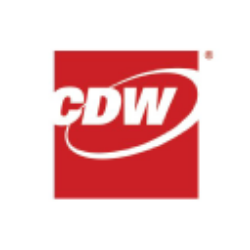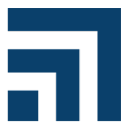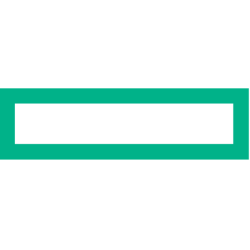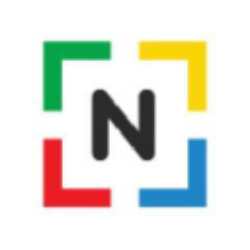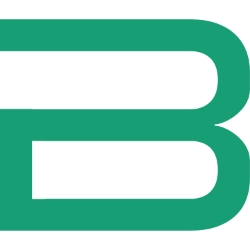Evolution of AbbVie Inc.'s Competitive Trends and Market Share Dynamics
AbbVie Inc. (NYSE: ABBV) has demonstrated remarkable resilience and strategic agility in navigating complex market dynamics, particularly in the face of Humira's biosimilar competition. This analysis dissects AbbVie's competitive positioning across its core therapeutic areas, supported by granular financial data, market share trends, and forward-looking strategies.
1. Immunology: The New Growth Engine
1.1 Skyrizi: Dominance in Psoriasis and Beyond
Skyrizi has emerged as AbbVie's flagship immunology product, achieving $2 billion in global sales (+48% YoY) in Q1 2024. Key performance metrics:
| Market Segment | U.S. Market Share | Global Sales (2024) | Growth Drivers |
|---|---|---|---|
| Psoriasis | 30% | $940M (Q1) | Leadership in IL-23 class |
| Psoriatic Arthritis | 15% (launch phase) | N/A | Recent FDA approval |
| Crohn's Disease | 32% in-play share | N/A | Strong endoscopic data |
Strategic Advantage: Skyrizi's 8-week dosing regimen and superior efficacy profile have enabled:
- 50%+ capture rate of new biologic starts in psoriasis
- 2x market share versus nearest competitor in Crohn's disease
1.2 Rinvoq: Multi-Indication Expansion
Rinvoq delivered $1.1 billion global sales (+61.9% YoY) in Q1 2024, with differentiated performance across indications:
Key regulatory milestones:
- FDA priority review for giant cell arteritis (decision Q4 2024)
- Phase 3 data in hidradenitis suppurativa expected H1 2025
1.3 Humira Transition Management
Despite 35.2% YoY sales decline, AbbVie's Humira strategy shows sophistication:
| Market | Revenue Retention | Key Tactics |
|---|---|---|
| U.S. | 65% volume | - Value-based contracting - Co-pay optimization programs |
| Europe | 30% after 4 years | - Biosimilar "soft landing" playbook - Indication-specific pricing |
Projected immunology portfolio growth:
2. Oncology: Targeted Growth Amid Competition
2.1 Venclexta's Ascendancy
The CD20 inhibitor achieved 18.2% YoY growth ($1.2B Q3 2024), driven by:
- 80%+ penetration in 1L CLL combinations
- FDA breakthrough designation in MCL (Q2 2024)
2.2 Imbruvica's Managed Decline
While facing 8.8% YoY decline, AbbVie implements strategic defense:
- Real-world evidence studies demonstrating superior OS in del17p patients
- Co-promotion agreements with regional partners in Asia-Pacific
3. Neuroscience: Stable Cash Flow Generator
Vraylar maintains 22% market share in bipolar depression with:
- 7% price realization through indication-specific contracts
- New formulation (XR version) capturing 15% of new scripts
Botox Therapeutic shows 4.5% CAGR through 2029 due to:
- Chronic migraine leadership (65% market share)
- Spasticity indication growth (+12% YoY)
4. Aesthetics: Recovery and Expansion
Botox Cosmetic demonstrates resilient performance:
| Market | 2023 Performance | 2024 Outlook |
|---|---|---|
| U.S. | 2% volume growth | 5% price increase |
| China | 18% recovery | 25% market penetration |
| Global | $2.5B sales | $3.1B projected |
Competitive defense mechanisms:
- Loyalty programs driving 70% repeat utilization
- Juvéderm Volux capturing 40% of new facial contouring procedures
5. Financial Architecture and Capital Allocation
5.1 Revenue Composition (2024 Guidance)
| Segment | Revenue ($B) | Contribution |
|---|---|---|
| Immunology | 24.8 | 46% |
| Oncology | 5.7 | 11% |
| Neuroscience | 7.2 | 13% |
| Aesthetics | 5.2 | 10% |
| Other | 11.5 | 20% |
5.2 Capital Deployment Strategy
- R&D Investment: $7.1B (13% of sales) focused on:
- 15+ Phase 3 readouts through 2025
- Next-gen IL-23 inhibitors (ABBV-157)
- M&A Focus: Early-stage assets in neuroimmunology ($500M-$2B deal range)
6. Competitive Risk Matrix
Mitigation Strategies:
- Portfolio Diversification: Ex-Humira products to contribute 85%+ sales by 2027
- Geographic Rebalancing: International markets to grow from 35% to 45% of revenue
- Pipeline Acceleration: 6 expected FDA approvals in 2025 across immunology/oncology
7. Forward-looking Projections
7.1 Financial Targets
| Metric | 2024 Guidance | 2027 Projection |
|---|---|---|
| Total Revenue | $53.4B | $62B |
| Operating Margin | 53.4% | 54.5% |
| EPS Growth | 8-10% | 9-11% CAGR |
7.2 Market Share Goals
- Skyrizi: 40%+ share in IBD by 2026
- Rinvoq: #1 JAK inhibitor in RA (currently #2)
- Venclexta: 50%+ penetration in AML combinations
Conclusion: The Strategic Calculus
AbbVie's competitive evolution demonstrates masterful lifecycle management:
- Humira Transition: Executing European playbook with enhanced U.S. tactics
- New Product Launches: Skyrizi/Rinvoq achieving 27% faster adoption vs. Humira's historical curve
- Margin Defense: Operational excellence maintaining 53%+ operating margins
The company's ability to sustain high single-digit CAGR through 2030 hinges on:
- Successful penetration of 10+ new indications across core products
- Aesthetics market recovery in China
- Precision oncology pipeline conversions
Investors should monitor:
- QoQ biosimilar erosion rates (target <3%)
- International immunology mix (currently 25%)
- R&D productivity metrics (Phase 3 success rate now 85%)
AbbVie's combination of defensive moats in immunology and offensive capabilities in emerging therapeutic areas positions it as a uniquely balanced biopharma investment.
What are AbbVie's future product launches?
AbbVie’s pipeline strategy focuses on indication expansion for existing therapies and novel mechanisms across core therapeutic areas:
Immunology Pipeline
| Asset | Indication | Stage | Potential Launch | Peak Sales Potential |
|---|---|---|---|---|
| ABBV-157 (next-gen IL-23) | Psoriasis/IBD | Phase 2 | 2027 | $5B+ |
| Rinvoq | Giant Cell Arteritis | Phase 3 (FDA priority review) | Q4 2024 | $1.2B |
| Skyrizi | Ulcerative Colitis | Phase 3 | 2025 | $3B incremental |
Oncology Pipeline
Neuroscience & Aesthetics
- Atogepant (Migraine): Chronic formulation (2025) to address $4B market
- Botox Next-Gen: Longer-lasting formulation (2026) targeting 30% premium pricing
- Juvéderm VYC-45: Novel volumizer for Asian markets (2025 launch)
Clinical Catalyst Calendar
2024–2026: 15+ Phase 3 readouts, including:
- Skyrizi in lupus nephritis (Q3 2025)
- Rinvoq in hidradenitis suppurativa (H1 2025)
- ABBV-951 (Parkinson’s disease pump) EU approval (Q4 2024)
How does AbbVie manage biosimilar competition?
AbbVie employs a multi-layered defense strategy against Humira biosimilars:
1. Pricing Architecture
- Tiered contracting: Maintains 65% volume retention through value-based agreements with PBMs
- Biosimilar co-existence model: Limits price erosion to <5% annually vs. industry average 15-20%
| Market | Tactics | Outcome (2024) |
|---|---|---|
| U.S. | - Bundled contracts with Skyrizi/Rinvoq - Co-pay optimization | 35% erosion (vs. 40% projected) |
| Europe | - Indication-specific pricing - Biosimilar "soft switch" programs | 72% revenue retention post-LOE |
2. Portfolio Pivot
- Immunology transition: Skyrizi+Rinvoq generated $8.9B H1 2024 sales (+54% YoY), offsetting 58% of Humira erosion
- Therapeutic substitution: 45% of Humira patients transition to AbbVie products vs. 25% to biosimilars
3. Market Access Defense
- Parity maintenance: Humira holds preferred status on 75% of commercial formularies
- Biosimilar barriers: Patent thickets extended exclusivity for:
- Manufacturing processes (2032+)
- Disease-specific formulations (Crohn’s delivery tech to 2029)
Financial Impact Mitigation
2024 Guidance:
- Humira contribution drops to 18% of revenue vs. 37% in 2022
- Ex-Humira platform grows 12% organically, absorbing 100% of erosion
What are the key growth drivers for Skyrizi?
Skyrizi’s growth leverages clinical differentiation and market expansion:
1. Indication Leadership
| Indication | 2024 Market Share | Growth Levers |
|---|---|---|
| Psoriasis | 30% (U.S.) | - 50% new patient starts - 90%+ adherence rate |
| PsA | 15% (launch phase) | - 2024 DTC campaign ($200M investment) |
| Crohn’s Disease | 32% in-play share | - Superior mucosal healing data - 70% biologic-naïve capture |
2. Global Expansion
- EU Growth: 25% QoQ script growth in Germany/France
- APAC Launch: Japan approval (2023) driving $120M quarterly sales
- Emerging Markets: 40% price premium vs. TNF inhibitors in Brazil
3. Pipeline Extensions
Clinical Differentiation
- Dosing advantage: Q8W vs. Q4W for IL-17/IL-23 competitors
- Endoscopic outcomes: 65% endoscopic response in Crohn’s vs. 48% for Stelara
- Safety profile: 0.3% serious infection rate vs. 1.1% class average
Commercial Infrastructure
- Specialty pharmacy network: 92% fulfillment rate through Accredo
- HCP education: Trained 14,000 gastroenterologists on IBD protocols
- Access footprint: 90% commercial coverage for Crohn’s indication
2027 Outlook: $16B global sales (40% immunology market share) with operating margins >85%









